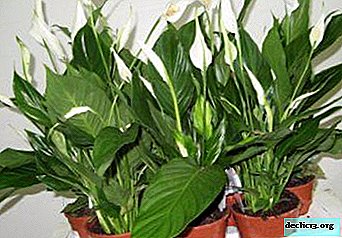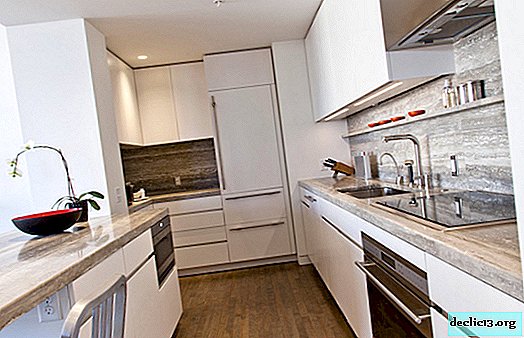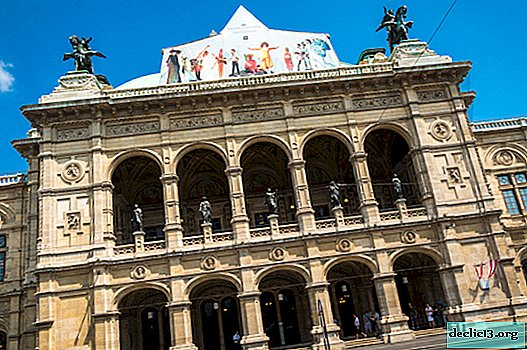Hagia Sophia: the incredible history of the museum in Istanbul
Hagia Sophia is one of the monumental monuments of history, which managed to survive until the 21st century and at the same time not lose its former greatness and energy, which is difficult to describe in any way. Once the largest temple in Byzantium, subsequently transformed into a mosque, today appears before us as the most original museum in Istanbul. This is one of the few complexes in the world where two religions intertwined at once - Islam and Christianity.

Often the cathedral is called the eighth wonder of the world, and, of course, today it is one of the most visited sites in the city. The monument carries great historical value, so it was inscribed on the UNESCO World Heritage List. How did it happen that in one complex Christian mosaics are adjacent to Arabic script? The incredible story of Hagia Sophia in Istanbul will tell us about this.
Short story

It was not possible to immediately build a grandiose church of Hagia Sophia and perpetuate it in time. The first two churches, erected on the site of a modern shrine, stood for only a few decades, and both buildings were destroyed by large fires. The third cathedral began to be rebuilt in the 6th century under the rule of the Byzantine emperor Justinian I. More than 10 thousand people were involved in the construction of the structure, which allowed the construction of a temple of such an incredible scale in just five years. Hagia Sophia in Constantinople for a millennium remained the main Christian church in the Byzantine Empire.

In 1453, Sultan Mehmed the Conqueror attacked the capital of Byzantium and subjugated it to himself, but he did not begin to destroy the great cathedral. The Ottoman ruler was so impressed by the beauty and scale of the basilica that he decided to transform it into a mosque. So, minarets were attached to the former church, it received the new name Aya Sofya and for 500 years served the Ottomans as the main city mosque. It is noteworthy that subsequently the Ottoman architects took as an example the Hagia Sophia when erecting such famous Islamic temples as Suleymaniye and the Blue Mosque in Istanbul. For a detailed description of the latter, see this page.

After the split of the Ottoman Empire and the coming to power of Ataturk in Hagia Sophia, work began on the restoration of Christian mosaics and frescoes, and in 1934 she was given the status of a museum and a monument of Byzantine architecture, which becomes a symbol of the coexistence of two great religions. Over the past two decades, many independent organizations of Turkey dealing with historical heritage have repeatedly filed a lawsuit to return the museum to the status of a mosque. Today within the walls of the complex it is forbidden to conduct Muslim services, and many believers see in this decision an infringement of religious freedom. Nevertheless, the Turkish court remains inexorable in its verdicts and continues to reject such claims.
Read also: Suleymaniye Mosque is a well-known Islamic temple in Istanbul.
Architecture and Interior
Hagia Sophia in Turkey is a rectangular basilica of classical shape with three naves, two vestibules adjoin the western part of which. The length of the temple is 100 meters, the width is 69.5 meters, the height of the dome is 55.6 meters, and its diameter is 31 meters. The main material during the construction of the building was marble, but light bricks made of clay and sand were also used. In front of the facade of Hagia Sophia there is a courtyard with a fountain in the middle. And nine doors lead to the museum itself: the central one in the old days could be used only by the emperor himself.

But no matter how magnificent the church looks from the outside, the true masterpieces of architecture are enclosed in its interior decoration. The hall of the basilica consists of two galleries (upper and lower) made of marble, specially imported to Istanbul from Rome. The lower tier is decorated with 104 columns, and the upper - 64. It is almost impossible to find a site in the cathedral that would not have been decorated. The interior features numerous frescoes, mosaics, silver and gold coatings, terracotta and ivory elements. There is a legend that says that Justinian originally planned to decorate the temple completely in gold, but the soothsayers dissuaded him, predicting the times of the poor and greedy emperors, who would not leave a trace from such a magnificent structure.

Of particular value in the cathedral are Byzantine mosaics and frescoes. They were preserved quite well largely due to the fact that the Ottomans who came to Constantinople simply plastered Christian images, thereby preventing their destruction. With the advent of the Turkish conquerors in the capital, the interior of the temple was supplemented by a mihrab (a Muslim altar), a lodge of the Sultan and a marble minbar (pulpit in a mosque). Also, candles traditional for Christianity, which were replaced by chandeliers from lamps, left the interior.

In the original version, Aya Sofya in Istanbul was illuminated by 214 windows, but over time, due to additional buildings in the shrine, there were only 181. There are 361 doors in the cathedral, one hundred of which are covered with various symbols. Rumor has it that whenever they are counted, there are new doors that have never been seen before. Under the ground part of the structure were discovered underground passages flooded by groundwater. During one of the studies of such tunnels, scientists found a secret passage leading from the cathedral to another famous landmark of Istanbul - Topkapi Palace. Also, jewelry and human remains were discovered here.

The decoration of the museum is so rich that it is practically impossible to describe it briefly, and not a single photo of the Hagia Sophia in Istanbul can convey the grace, atmosphere and energy that are inherent in this place. Therefore, be sure to visit this unique historical monument and see for yourself its greatness.
How to get there
Hagia Sophia is located on Saltanahmed Square, in the old city district of Istanbul called Fatih. Attati is 20 km from Ataturk Airport. If you plan to visit the temple immediately upon arrival in the city, you can get to the place by taxi or by public transport, represented by the subway and tram.

You can get into the subway directly from the airport building, following the corresponding signs. You need to take the "M1" line and get to the Zeytinburnu station. The fare is 2.6 tl. Upon leaving the subway, you will have to walk a little more than a kilometer east along Seyit Nizam Street, where the T 1 Kabataş - Bağcılar tram stop is located (price per trip 1.95 tl). You need to get off at the Sultanahmet stop, and after just 300 meters you will find yourself at the cathedral.
If you go to the temple not from the airport, but from any other point of the city, then in this case you also need to get on the T 1 tram line and land at the Sultanahmet stop.
On a note: In which area of Istanbul is it better for a tourist to settle for a few days.
Compare accommodation prices using this form
Practical information
The exact address: Sultanahmet Meydanı, Fatih, İstanbul, Türkiye.
Opening hours: during the period from April 15 to October 30, the doors of the cathedral are open for visitors from 09:00 to 19:00. The last ticket can be purchased no later than 18:00. In the period from October 30 to April 15, the attraction is open from 09:00 to 17:00. Ticket offices are available until 16:00.

As of September 2018, the price for admission to the Hagia Sophia in Istanbul is 40 tl. However, from October 1, 2018, the Turkish authorities raise the cost of entrance tickets in more than 50 museums of the country, including Ayia Sofya. So, with the onset of the indicated date, the price for entering the temple will be 60 tl. This increase is due to the difficult economic situation in Turkey, as well as a sharp drop in the Turkish lira against the dollar and the euro.Find out RATES or book any accommodation using this form
Useful Tips
If you plan to visit the Hagia Sophia in Istanbul, be sure to pay attention to the recommendations of tourists who have already visited the museum. We, in turn, after studying the reviews of travelers, made our top of the most useful tips:

- It is best to go to the sights by 08: 00-08: 30 in the morning. After 09:00, large lines form at the box office near the ticket office, and standing in the open air, especially at the height of the summer season, is quite exhausting.
- If in addition to Ayia Sofya you plan to visit other iconic places of Istanbul with a paid entrance, we advise you to purchase a special museum card that operates only within the metropolis. Its cost is 125 tl. Such a pass will allow you not only to save money, but also to avoid long lines at the box office.
- Another life hack for those who do not want to lose time in the crowd of tourists: you can always find illegal sellers near the museum who will sell you an entrance ticket with a small extra charge.
- Be sure to bring water with you. In the summer months, Istanbul is quite hot, so you can’t do without fluids. Water can also be bought at the cathedral, but it will cost several times more.
- Tourists who visit the museum recommend that they allocate no more than two hours for a tour of the Hagia Sophia church.
- To make your impressions of visiting the cathedral as complete as possible, we advise you to hire a guide. You can find a conductor who speaks Russian right at the entrance. Each of them has its own price, but in Turkey you can always bargain.
- If you do not want to spend money on a guide, then purchase an audio guide, and if this option does not suit you, then before visiting the cathedral, watch a detailed film about Aya Sofya from National Geographic.
- Some travelers do not recommend visiting the temple in the evening, because, according to them, only in daylight can you fully see all the details of the interior.


Output
Hagia Sophia is undeniably a must-see attraction in Istanbul. And using the information and recommendations from our article, you can organize the perfect tour and get the most out of the museum.

















